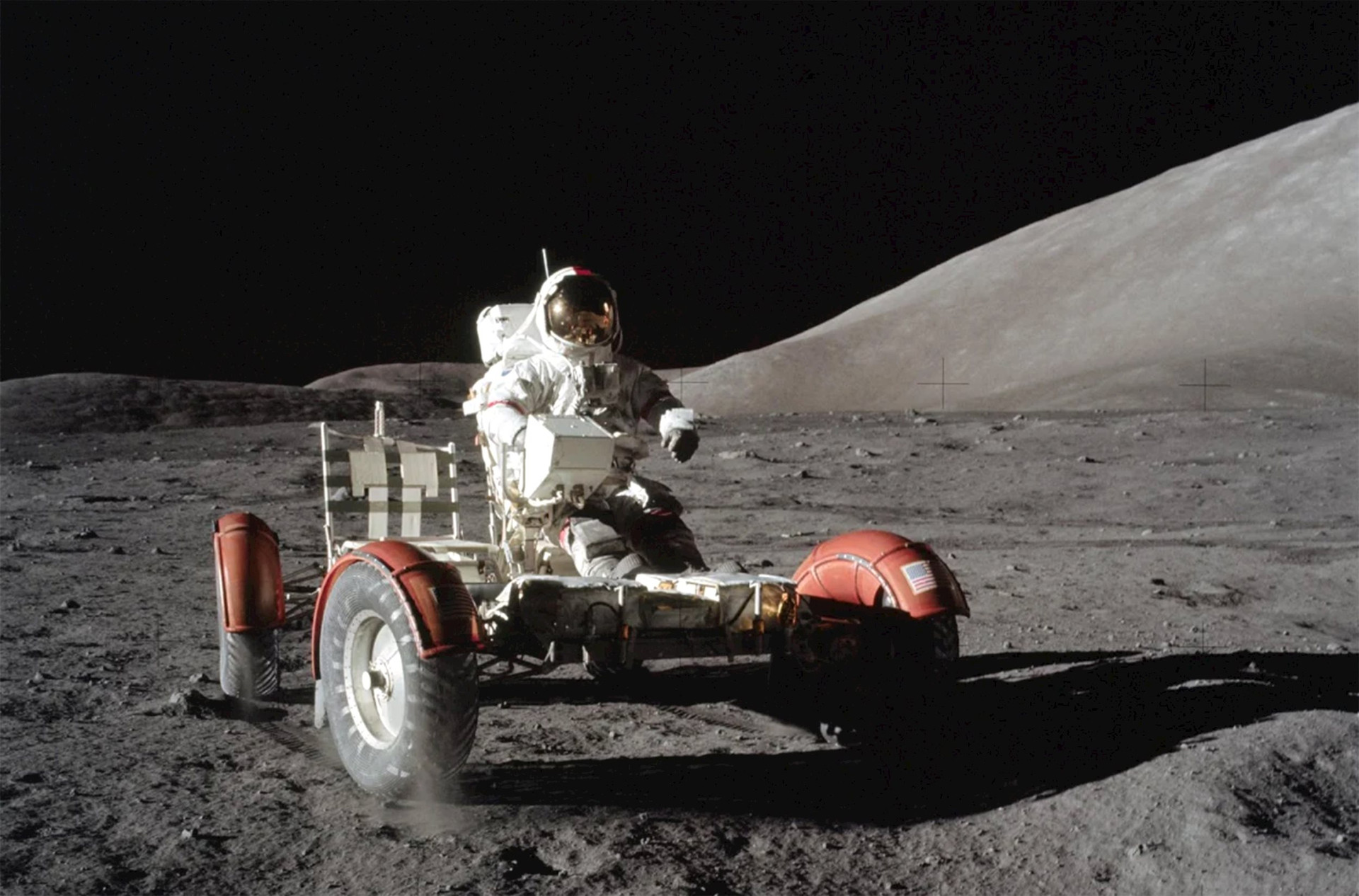
According to NASA, the Luna 2 probe created a crater when it touched down on the Moon. Some scientists believe that this historic moment signals the beginning of human exploration of the Moon, and also the beginning of a new geological epoch, also known as the Lunar Anthropocene, according to a commentary published in the journal Nature Geoscience on December 8, 2023.
“The idea is very similar to the discussion of the Anthropocene on Earth, exploring how much humans have impacted our planet,” said the paper’s lead author, Justin Holcomb, a postdoctoral researcher with the Kansas Geological Survey at the University of Kansas.
The idea of the Lunar Anthropocene comes at a time when civilian space agencies and commercial organizations are showing renewed interest in returning to the Moon or, in some cases, finding ways to set foot on the Moon for the first time.
Justin Holcomb argues that the lunar environment — which was shaped by humans early in the Lunar Anthropocene — will change in more dramatic ways as exploration increases.
Human Footprints on the Moon
To date, the lunar surface has been marked by numerous human expeditions. Since Luna 2 landed, more than 100 spacecraft have crashed and landed on the Moon, and “humans have disturbed the surface at least 58 different locations on the lunar surface.” Touching down on the lunar surface is extremely difficult, as evidenced by the many collisions that have left their mark and created new craters.
The Cold War space race launched a series of lunar missions, most of which have been carried out since. NASA’s Apollo missions were the first to send humans around the Moon in the 1960s before landing astronauts safely on the Moon’s surface for the first time in 1969 with Apollo 11. Ultimately, 12 NASA astronauts walked on the Moon’s surface between 1969 and 1972.
According to Justin Holcomb, with the appearance of humans, many objects were left behind, including scientific equipment for experiments, parts of spacecraft, flags, photos and even golf balls and religious texts.
Declaring an Anthropocene on the Moon could make clear that the Moon is changing in unnatural ways due to human exploration, researchers say.
“Cultural processes are starting to outpace the natural geological processes on the Moon,” said Holcomb. “These processes involve moving sediments that we call ‘regolith’ across the Moon. Typically, these processes are caused by meteorite impacts and mass movement events, among other things. However, when we consider the impacts of rovers, landers, and human movements, they also significantly disturb the surface soil.”
The Moon also has features like a fragile exosphere of dust, gas and ice within permanently shadowed areas that are vulnerable and could be disturbed by continued exploration, scientists say. “Future missions must consider minimizing adverse impacts on the lunar environment,” Holcomb said.
The Moon Exploration Race
A new space race is heating up as more countries aim to launch robotic and crewed missions to explore the Moon's south pole and other hard-to-reach and unexplored regions.
India’s Chandrayaan-3 mission successfully landed on the Moon in 2023 after Russia’s Luna 25 spacecraft and Japan’s Ispace’s HAKUTO-R lander both crashed. Several missions are still headed to the Moon this year, including Japan’s Moon Sniper lander, which is scheduled to land on the Moon on January 19.
Astrobotic Technology’s Peregrine spacecraft launched this week amid protests from the Navajo Nation that the vehicle was carrying human remains paid for by a customer to be sent to the lunar surface, sparking a new debate over who should control the Moon. But engine problems discovered hours after liftoff mean Peregrine will still attempt to land on the Moon, and its fate remains uncertain.
NASA's Artemis program aims to return humans to the lunar surface by 2026. The agency's ambitions include establishing a sustainable human presence on the moon, with habitats supported by resources such as water ice at the lunar south pole. China's space ambitions also include a lunar landing.
“In the context of the new space race, the lunar landscape will be very different in 50 years,” said Holcomb. “There will be many nations present, which will present many challenges. Our goal is to dispel the myth of a static moon and emphasize the importance of our impact, not just in the past, but also in the present and in the future.”
The Apollo 11 moon landing on July 20, 1969, marked the first time humans set foot on another world . Researchers say the astronauts’ footprints in the lunar dust are perhaps the most iconic symbol of humanity’s ongoing exploration, which may one day include planets like Mars.
Source





























































































![[Infographic] In 2025, 47 products will achieve national OCOP](https://vphoto.vietnam.vn/thumb/402x226/vietnam/resource/IMAGE/2025/7/16/5d672398b0744db3ab920e05db8e5b7d)





Comment (0)